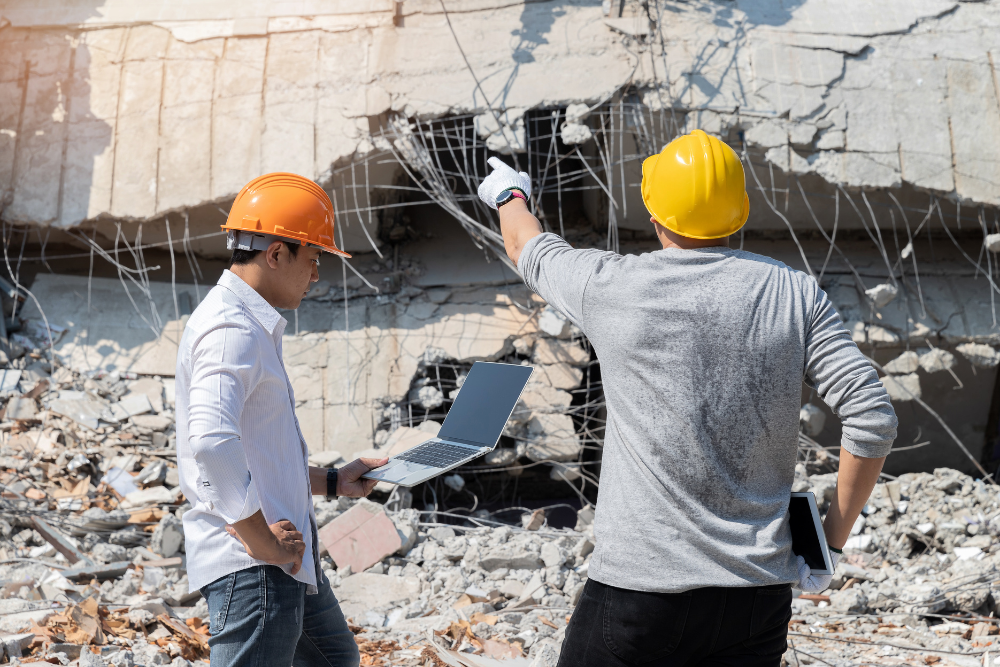Demolition and asbestos removal are critical processes in construction, renovation, and property redevelopment. These tasks require careful planning, adherence to safety regulations, and specialized expertise to ensure the protection of workers, the public, and the environment. demolition and asbestos removal a hazardous material commonly used in construction until the late 20th century, poses significant health risks when disturbed. This guide explores the intricacies of demolition and asbestos removal, highlighting the importance of proper procedures, safety measures, and regulatory compliance.
What is Demolition?
Demolition is the process of dismantling, destroying, or removing structures, buildings, or parts of buildings. It is often the first step in redeveloping a site or preparing it for new construction. Demolition can range from small-scale projects, such as removing a single wall, to large-scale operations involving entire buildings or industrial facilities.
Types of Demolition
-
Interior Demolition: Focuses on removing internal structures, such as walls, floors, and ceilings, while preserving the building's exterior.
-
Selective Demolition: Involves removing specific parts of a structure, often for renovation or remodeling purposes.
-
Total Demolition: The complete destruction of a structure, leaving the site clear for new construction.
-
Implosion: A controlled demolition method using explosives to bring down large structures in a matter of seconds.
-
Deconstruction: A sustainable approach that involves carefully dismantling a structure to salvage reusable materials.
The Risks of Asbestos in Demolition
Asbestos is a naturally occurring mineral that was widely used in construction materials due to its durability, heat resistance, and insulating properties. However, when asbestos-containing materials (ACMs) are disturbed during demolition, they release microscopic fibers into the air. Inhaling these fibers can lead to serious health conditions, including:
-
Asbestosis: A chronic lung disease caused by prolonged exposure to asbestos fibers.
-
Lung Cancer: Asbestos exposure significantly increases the risk of lung cancer, especially among smokers.
-
Mesothelioma: A rare and aggressive form of cancer that affects the lining of the lungs, abdomen, or heart.
Due to these risks, asbestos removal is a highly regulated process that must be conducted by licensed professionals.
The Asbestos Removal Process
Asbestos removal is a meticulous process that requires specialized equipment, training, and adherence to strict safety protocols. Below is an overview of the steps involved:
1. Inspection and Testing
Before any demolition or renovation work begins, a thorough inspection of the property is conducted to identify the presence of asbestos. Samples of suspected materials are collected and analyzed in a laboratory to confirm the presence of asbestos.
2. Developing an Asbestos Management Plan
If asbestos is found, an asbestos management plan is created. This plan outlines the scope of work, safety measures, and disposal methods to ensure compliance with local, state, and federal regulations.
3. Containment
To prevent the spread of asbestos fibers, the work area is sealed off using plastic sheeting and negative air pressure systems. This containment ensures that fibers do not escape into other parts of the building or the surrounding environment.
4.Removal
Licensed asbestos removal professionals use specialized tools and protective equipment to carefully remove ACMs. Wet methods are often employed to minimize the release of fibers into the air.
5. Disposal
Asbestos waste is double-bagged in approved containers and labeled according to regulatory requirements. It is then transported to a licensed disposal facility for safe and permanent disposal.
6. Clearance Testing
After removal, the work area is thoroughly cleaned, and air quality tests are conducted to ensure that no asbestos fibers remain. Only after passing clearance testing can the area be deemed safe for reoccupation.
Safety Measures in Demolition and Asbestos Removal
Safety is paramount in both demolition and asbestos removal. Key safety measures include:
-
Personal Protective Equipment (PPE) : Workers must wear respirators, gloves, coveralls, and other protective gear to minimize exposure to hazardous materials.
-
Training and Certification : All personnel involved in asbestos removal must undergo specialized training and hold the necessary certifications.
-
Regulatory Compliance : Adherence to regulations set by organizations such as OSHA (Occupational Safety and Health Administration) and the EPA (Environmental Protection Agency) is mandatory.
-
Public Safety : Proper signage, barriers, and communication are essential to protect the public from potential hazards.
Environmental Considerations
Demolition and asbestos removal can have significant environmental impacts. Proper waste management, recycling of materials, and minimizing dust and debris are crucial to reducing the environmental footprint of these activities. Sustainable practices, such as deconstruction and the use of eco-friendly disposal methods, are increasingly being adopted in the industry.
Conclusion
Demolition and asbestos removal are complex and highly regulated processes that require expertise, precision, and a commitment to safety. Whether you're planning a small renovation or a large-scale demolition project, it's essential to prioritize the identification and safe removal of asbestos to protect human health and the environment. By working with licensed professionals and adhering to regulatory guidelines, you can ensure that your project is completed safely, efficiently, and responsibly. Remember, cutting corners in these processes can have severe consequences, so always prioritize quality and safety over speed or cost savings.
